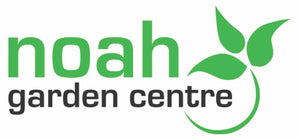Bottom watering is a simple and effective technique that can help keep your plants healthy and thriving. Unlike traditional watering methods where you water from the top, bottom watering involves placing your plant in a tray or saucer of water and allowing it to soak up the water from the bottom. In this blog post, we'll explore the benefits of bottom watering and how to do it correctly.
Benefits of Bottom Watering Plants:
-
Reduces the risk of overwatering: When you water your plants from the top, it's easy to overwater them, especially if you're using a watering can or hose. With bottom watering, the plant takes up only the amount of water it needs, so there's less chance of overwatering.
-
Helps prevent waterlogging: Waterlogging is a common problem with many plants, and it can cause root rot and other issues. Bottom watering allows the plant to take up water only as it needs it, so there's less chance of waterlogging.
-
Encourages root growth: Bottom watering encourages the roots of your plants to grow deeper into the soil in search of water. This helps to develop a stronger root system, which in turn leads to healthier and more robust plants.
-
Prevents soil erosion: When you water your plants from the top, the force of the water can wash away soil and nutrients. Bottom watering, on the other hand, allows the water to seep slowly into the soil, preventing erosion and ensuring that your plants get the nutrients they need.
How to Bottom Water Plants
-
Choose the right container: Make sure that the container you use for bottom watering is slightly larger than the pot your plant is in. This will allow for enough space for the water to flow and be absorbed.
-
Fill the container with water: Fill the container with water until it reaches about 1/4 to 1/2 inch below the bottom of the pot. This will allow the plant to absorb the water without completely submerging it.
-
Let the plant soak up the water: Place the pot in the container of water and let it sit for about 30 minutes to an hour. The plant will absorb the water through the drainage holes in the bottom of the pot.
-
Remove the pot from the container: After the plant has had time to soak up the water, remove it from the container and let it drain off any excess water. Make sure to empty any remaining water in the container to prevent mold or bacterial growth.
Bottom watering is a simple and effective technique that can help keep your plants healthy and thriving. By following the steps outlined in this blog post, you'll be able to provide your plants with the water they need while minimizing the risk of overwatering and other problems. View our tiktok below about it!
Give it a try and see how it works for you!

